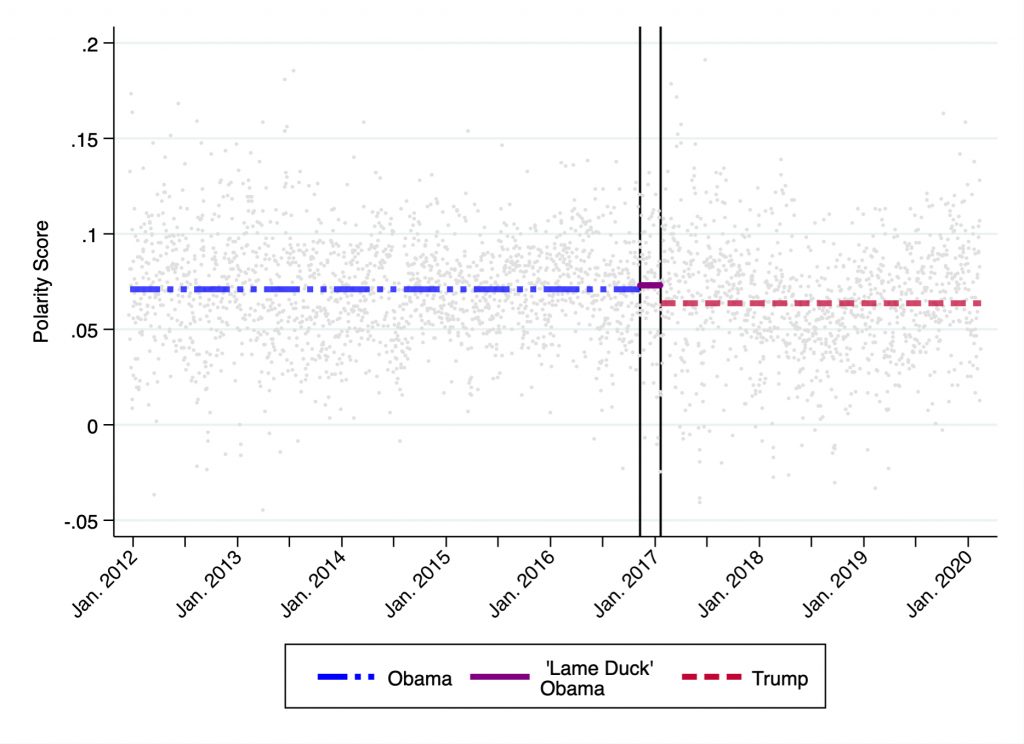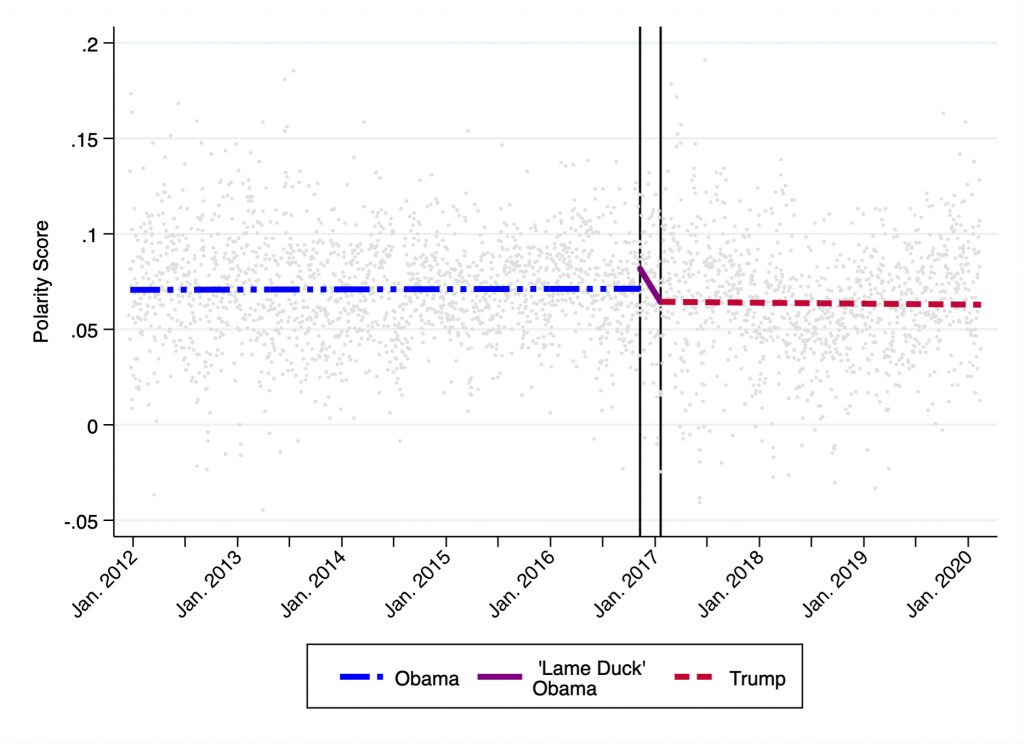How to proceed with bilateral and multilateral relations with Iran was a focal point of the 2016 US election. The winner campaigned on pivoting away from friendlier relations with Iran through the Joint Comprehensive Plan of Action to decertifying the deal and pursuing a policy of ‘maximum pressure’ meant to deter Iran from its nuclear, military, and socio-political aspirations. There is a deluge of articles and reports assessing the success and failures of ‘maximum pressure’ through a variety of kinetic military metrics, sponsorship of armed actors in conflict arenas including Yemen, Iraq, and Syria, and scientific and nuclear progress such as Iran’s military satellite launch on April 22, 2020.
This report analyzes an alternative metric – how Iran’s Islamic Republic News Agency (IRNA) talks about the world under the Obama and Trump presidencies. Because the IRNA is the government’s official media outlet and controlled by the Ministry of Culture and Islamic Guidance, it can be used as a propaganda machine to guide national conversation and perspectives, and how the IRNA ‘talks’ could provide insight into how Iran views global relations. For example, when the U.S. tries to build positive relations with the Iranian regime and create pathways for progress on critical issues, Iran may be incentivized to be less belligerent and promote ‘rosier’ perspectives of the country’s relations. If so, then when the U.S. tries to bully Iran, then the IRNA may take a more negative tone and rile up anti-U.S. sentiment or general antagonistic attitudes among the public.
We test this proposition using the FOCUS data’s 102,326 IRNA articles from January 1, 2012 to February 15, 2020. Using sentiment analysis, a polarity value is assigned to each article. Polarity is a quantified measurement of a text’s negative, neutral, or positive sentiment ranging from -1 to 1, respectively; a value of 0 corresponds with neutral sentiment. For the analysis, the data is aggregated to the day (clearly there are multiple articles per day) to produce a daily average polarity value. We then calculate the average polarity during Obama’s presidency excluding the ‘lame duck’ period in between the 2016 election and Trump’s inauguration, during the ‘lame duck’ period, and during Trump’s presidency. Figure 1 illustrates the daily polarity score in light gray circles and the average polarity per time period; the black vertical lines mark the dates our periods change (November 6, 2016 and January 20, 2017).

There is a distinct change in average polarity between the Obama and Trump presidencies. Our findings show that change in U.S. leadership and policy from a more even-handed approach by Obama to anti-Iranian ‘maximum pressure’ approach by Trump is correlated with a change in the IRNA’s tone.
Comparing the average polarity values per president shows that the IRNA’s tone was significantly more positive during the Obama presidency than in the Trump presidency to date. The average polarity score during the Obama presidency was 0.071 and 0.064 during the Trump presidency. While both were slightly on the positive side of polarity, the IRNA has been 9.9% more negative during the Trump administration through February 15, 2020. And if we instead graph lines of best fit across the three time periods, we see in Figure 2 that the change in IRNA’s polarity was rather quick and dramatic. During the Obama administration, IRNA polarity gradually became slightly more positive, whereas during the Trump administration the polarity has slightly decreased.

The change in IRNA’s polarity aligns with change in U.S. leadership. Words matter and it appears that campaign promises and presidential policy can influence a U.S. rival’s propaganda. The identified change in IRNA polarity, and thus Iran’s official public position and propaganda, aligned with a leadership transition in the U.S., which is not surprising given the abrupt shift in U.S. policy. And it provides one more piece of evidence that leaders and leadership change matter in international relations and security and can be measured through official government public sentiment as well as in trade flows, sovereign debt, or crisis bargaining.
